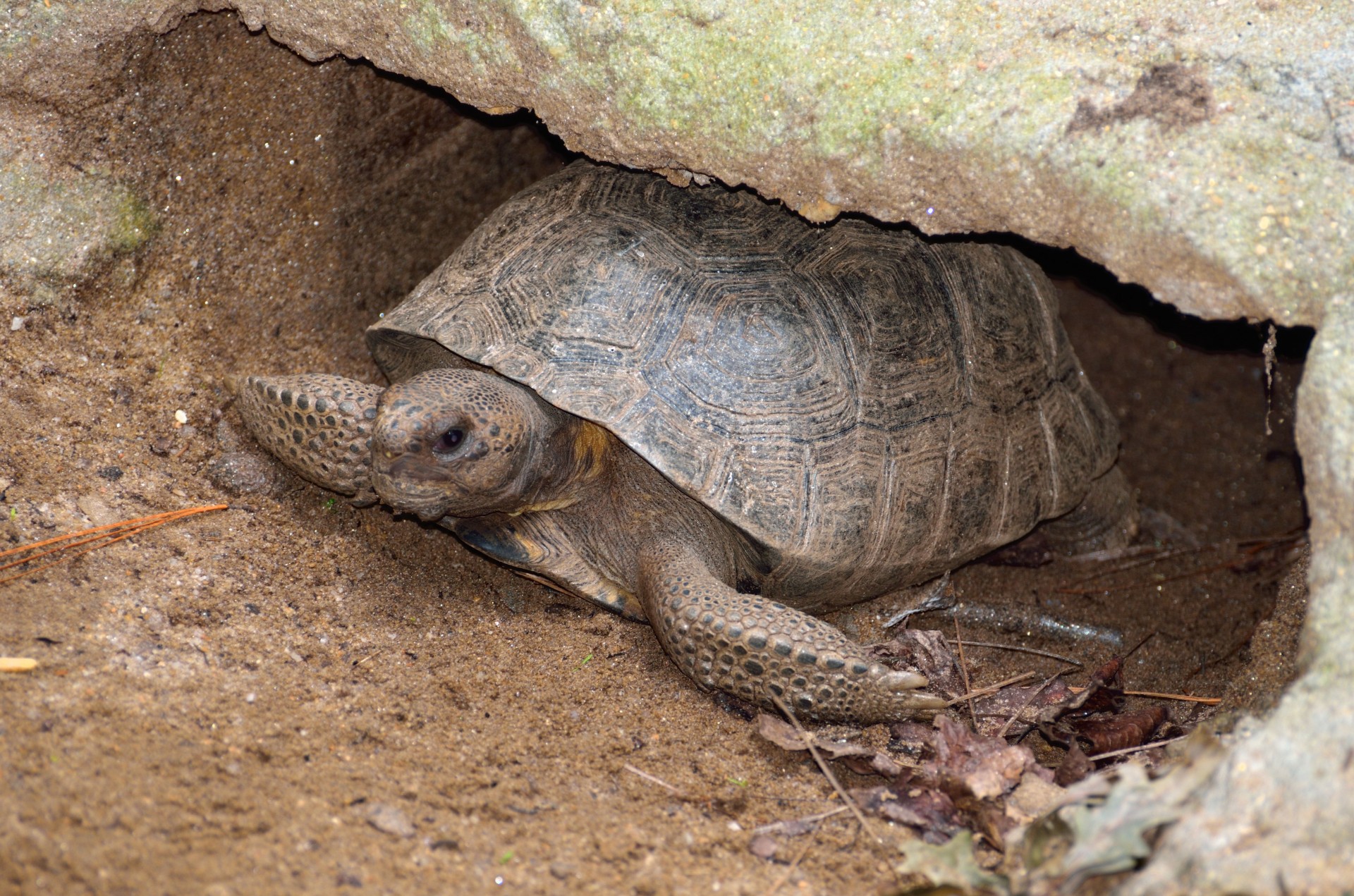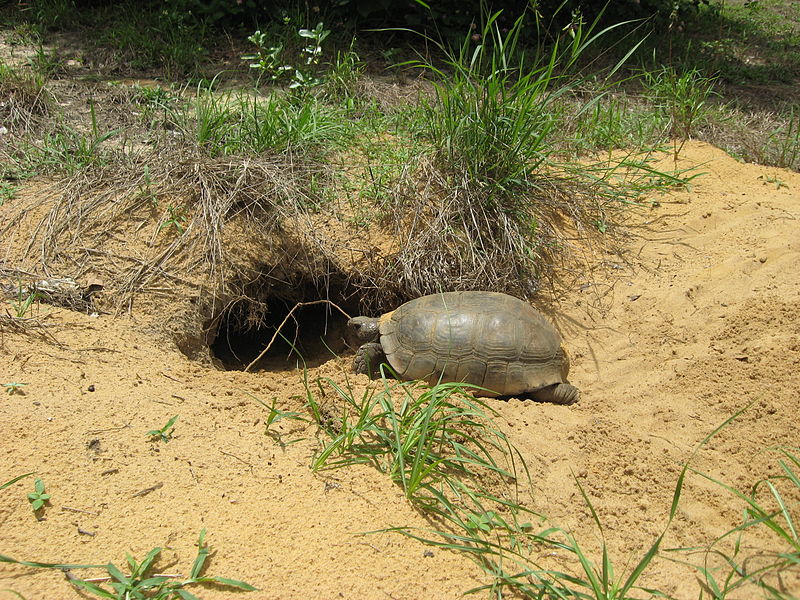Turtles dig holes primarily for nesting and laying eggs. They also dig to create cool, moist burrows for resting.
Turtles exhibit fascinating behaviors, one of which is digging holes. This activity serves crucial purposes in their survival. Female turtles dig nests in sandy or soft soil to lay their eggs, ensuring a safe and suitable environment for incubation. This process is essential for the continuation of their species.
Additionally, turtles often dig burrows to escape extreme temperatures and predators. These burrows provide a cool, moist refuge that helps regulate their body temperature and offers protection. Understanding why turtles dig holes highlights their adaptive strategies and the importance of preserving their natural habitats. Turtles’ digging behavior is vital for their reproductive success and overall well-being.
Turtles And Their Behavior
Turtles are fascinating creatures with unique habits. One of their intriguing behaviors is digging holes. Understanding why turtles dig holes can help us appreciate their natural instincts and the environmental factors that influence them.
Natural Instincts
Turtles have strong natural instincts that guide their actions. Digging holes is one of these instincts. Here are some reasons why:
- Nesting: Female turtles dig holes to lay their eggs. This protects the eggs from predators and environmental hazards.
- Temperature Regulation: Turtles dig to find cooler ground or to warm up. This helps them regulate their body temperature.
- Protection: Turtles may dig to hide from predators or to find shelter.
Environmental Influences
The environment plays a significant role in a turtle’s digging behavior. Different factors can influence this action:
| Environmental Factor | Effect on Digging |
|---|---|
| Soil Type | Soft soil makes it easier for turtles to dig holes. |
| Weather Conditions | Hot weather may prompt turtles to dig for cooler ground. |
| Predator Presence | Turtles dig to create safe hiding spots from predators. |
Understanding these behaviors helps us protect and conserve turtle habitats. By knowing why turtles dig holes, we can better support their natural activities and ensure their survival.
The Purpose Of Digging
Turtles are fascinating creatures. One of their unique behaviors is digging holes. Understanding why they dig holes can help us appreciate these reptiles more. This section will explore the purpose of digging.
Nesting
One primary reason turtles dig holes is for nesting. Female turtles create nests in the sand or soil. They lay their eggs in these carefully dug holes. This process ensures the eggs are safe from predators and environmental factors.
The nesting process involves the female turtle using her hind legs. She digs a deep hole, deposits her eggs, and then covers the hole with sand or soil. This camouflage helps protect the eggs from being discovered.
Here’s a simple breakdown of the nesting process:
- Find a suitable location
- Dig a deep hole
- Lay eggs
- Cover the eggs
Thermoregulation
Turtles also dig holes for thermoregulation. They need to maintain a stable body temperature. Digging helps them escape extreme temperatures.
In hot weather, turtles dig holes to cool down. The soil beneath the surface is cooler than the air. By burrowing into the ground, turtles can avoid overheating. Conversely, in cold weather, digging helps them stay warm. The ground provides insulation against the cold air above.
Here’s a quick summary of thermoregulation through digging:
- Cool down in hot weather
- Stay warm in cold weather
- Maintain stable body temperature
Nesting Habits
Turtles are fascinating creatures with unique nesting habits. Understanding these habits can help us protect these ancient reptiles. Let’s explore why turtles dig holes, focusing on their nesting behavior.
Egg Laying
Female turtles dig holes to lay their eggs. This process ensures the safety of their offspring. The holes provide a secure environment for the eggs to develop. The depth and size of the hole depend on the turtle species. Each species has its own nesting preferences.
After laying the eggs, the mother turtle covers the hole with sand or soil. This helps to camouflage the eggs from predators. The temperature inside the nest affects the sex of the hatchlings. Warmer nests produce more females, while cooler nests produce more males.
Choosing The Right Spot
Choosing the perfect nesting spot is crucial for turtle survival. Female turtles are picky about where they dig their holes. They look for areas with the right soil type and temperature. The spot must be safe from flooding and predators.
Some turtles travel long distances to find the ideal nesting site. Sea turtles often return to the beach where they hatched. Freshwater turtles may choose sandy banks near water bodies. The right spot ensures the best chances for the eggs to hatch successfully.
| Turtle Species | Nesting Habitat |
|---|---|
| Sea Turtle | Sandy Beaches |
| Freshwater Turtle | Sandy Banks |
| Box Turtle | Forests and Meadows |
Understanding the nesting habits of turtles helps in their conservation. Protecting nesting sites ensures the survival of these amazing reptiles.

Credit: blogs.ifas.ufl.edu
Thermoregulation Techniques
Turtles are fascinating creatures with unique behaviors. One of their most interesting behaviors is digging holes. They do this to regulate their body temperature, a process known as thermoregulation. By digging, turtles can control their environment to stay comfortable. Let’s explore some of their thermoregulation techniques.
Temperature Control
Turtles use holes to control their body temperature. During hot days, they dig to find cooler ground. This helps them avoid overheating. On cold days, digging helps them find warmer ground. This keeps them from getting too cold. These holes act as natural air conditioners. The ground’s temperature is more stable than the air.
Shelter Creation
Digging also helps turtles create shelters. These shelters protect them from predators and harsh weather. A well-dug hole provides a safe space. It can also be a place to rest. Turtles dig to find a place to lay their eggs. This ensures the eggs are safe and at a stable temperature. The holes they dig serve multiple purposes, all related to survival.
Predator Avoidance
Turtles have many ways to stay safe from predators. One of the most effective methods is digging holes. This simple act helps turtles avoid danger and stay hidden. Let’s explore how they do this.
Camouflage
Turtles use holes to blend into their surroundings. By digging, they can cover themselves with dirt and leaves. This makes it hard for predators to spot them. The color of their shells also helps. It matches the ground, adding another layer of camouflage.
Burrowing Strategies
Turtles have different burrowing strategies based on their species. Some dig deep holes, while others prefer shallow ones. Here’s a table showing the differences:
| Species | Burrow Depth | Purpose |
|---|---|---|
| Box Turtle | Shallow | Hiding |
| Desert Tortoise | Deep | Temperature Control |
Box Turtles dig shallow holes to hide quickly. Desert Tortoises dig deep to stay cool and safe. These strategies help them avoid predators effectively.
- Shallow burrows are quick and easy to make.
- Deep burrows offer more protection.
Both methods are important for survival. Turtles choose the best strategy based on their environment and needs.
Species-specific Digging
Turtles dig holes for various reasons, depending on their species. Each type of turtle has its own unique digging behavior. Let’s explore why sea turtles and land turtles dig holes.
Sea Turtles
Sea turtles dig holes to lay their eggs. Female sea turtles come ashore to find a suitable nesting spot. They prefer sandy beaches with minimal disturbance. The digging process usually occurs at night to avoid predators and the heat of the sun.
Once a location is chosen, the sea turtle uses her flippers to dig a large hole. This hole, known as a nesting cavity, is usually 12 to 20 inches deep. She then lays her eggs in the cavity, covers them with sand, and returns to the sea.
Sea turtle nests are critical for the survival of the species. The eggs incubate in the warm sand for about 60 days. Eventually, the hatchlings emerge and make their way to the ocean.
Land Turtles
Land turtles, such as box turtles and tortoises, dig for different reasons. One common reason is to create a burrow for shelter. These burrows protect them from extreme weather and predators.
Land turtles also dig to find food. They use their strong front legs to unearth insects, worms, and roots. Digging helps them stay cool in hot weather and warm in cold weather.
Female land turtles dig holes to lay eggs. Unlike sea turtles, they often choose more secluded and forested areas. The eggs are buried in the soil and left to incubate naturally.
Both sea and land turtles demonstrate fascinating digging behaviors. Each species has adapted unique methods to ensure their survival.
Impact Of Habitat
Turtles are fascinating creatures. Their behavior often depends on their habitat. One common behavior is digging holes. Different habitats cause turtles to dig for various reasons.
Soil Type
The type of soil affects how and why turtles dig. Sandy soil is easy for turtles to dig through. It is often found near beaches where sea turtles lay eggs. Clay soil is harder to dig but holds shape well. Turtles in clay soil dig to create burrows for shelter. Loamy soil, a mix of sand, silt, and clay, is ideal for digging. It provides both ease of digging and stability.
| Soil Type | Characteristics | Impact on Digging |
|---|---|---|
| Sandy | Easy to dig, loose | Good for laying eggs |
| Clay | Hard to dig, holds shape | Good for burrows |
| Loamy | Mix of sand, silt, clay | Best for digging |
Climate Conditions
Climate greatly impacts turtle digging behavior. In hot climates, turtles dig to escape the heat. These holes provide cooler, moist places to rest. In cold climates, turtles dig to hibernate. These burrows protect them from freezing temperatures. Rainy climates also influence digging. Turtles dig to create nests safe from flooding. Dry climates require digging for moisture and coolness.
- Hot climates: Dig to escape heat.
- Cold climates: Dig to hibernate.
- Rainy climates: Dig to avoid floods.
- Dry climates: Dig for moisture and coolness.

Credit: blogs.ifas.ufl.edu
Conservation Efforts
Conservation efforts play a crucial role in protecting turtles and their habitats. These efforts ensure the survival of these ancient creatures. By understanding why turtles dig holes, we can better support their conservation. This section delves into how we can protect nesting sites and monitor populations.
Protecting Nesting Sites
Nesting sites are vital for turtle reproduction. Conservationists work to protect these areas from human interference. They often use barriers to keep predators away. Volunteers may patrol beaches during nesting seasons. This helps keep nests safe from harm.
Protecting nesting sites also involves community education. People learn the importance of turtle conservation. They are encouraged to keep beaches clean and undisturbed. Some areas have specific guidelines for light pollution. This helps turtles find their way to the ocean.
Monitoring Populations
Monitoring turtle populations is essential for their survival. Scientists use various methods to track turtles. Tagging turtles helps researchers gather data on their movements. This information is crucial for creating effective conservation strategies.
Conservationists also conduct nest counts. They record the number of nests each season. This data helps assess the health of turtle populations. When necessary, conservationists may relocate nests. This ensures that hatchlings have a better chance of survival.
Community involvement is key in these efforts. Local volunteers often assist with monitoring activities. They help gather data and protect nesting sites. This collective effort makes a significant difference in turtle conservation.

Credit: www.youtube.com
Conclusion
Understanding why turtles dig holes helps us appreciate their natural behaviors. These actions are crucial for nesting and survival. Observing turtles can reveal much about their needs and habitats. Protecting these gentle creatures ensures their continued presence in our ecosystems.
Let’s cherish and safeguard our shelled friends.
